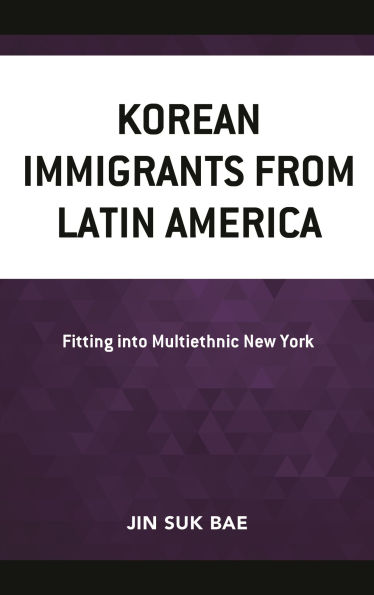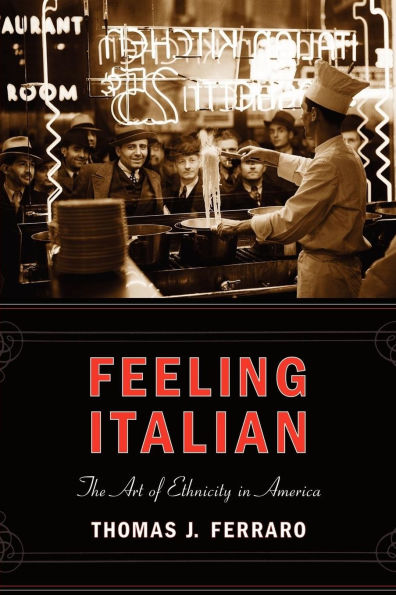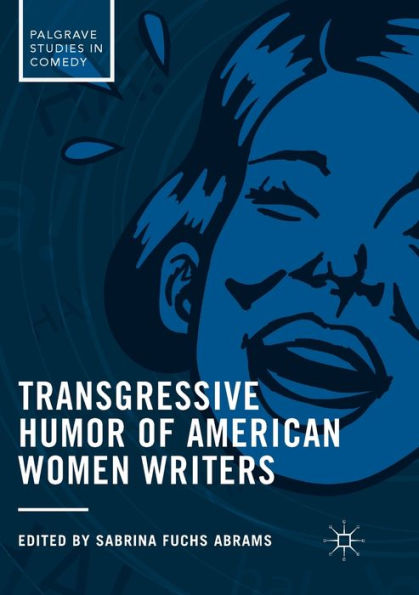Home
Ethnic Humor Multiethnic America
Barnes and Noble
Loading Inventory...
Ethnic Humor Multiethnic America in Franklin, TN
Current price: $38.95

Barnes and Noble
Ethnic Humor Multiethnic America in Franklin, TN
Current price: $38.95
Loading Inventory...
Size: Paperback
When wielded by the white majority, ethnic humor can be used to ridicule and demean marginalized groups. In the hands of ethnic minorities themselves, ethnic humor can work as a site of community building and resistance. In nearly all cases, however, ethnic humor can serve as a window through which to examine the complexities of American race relations. In
Ethnic Humor in Multiethnic America
, David Gillota explores the ways in which contemporary comic works both reflect and participate in national conversations about race and ethnicity.
Gillota investigates the manner in which various humorists respond to multiculturalism and the increasing diversity of the American population. Rather than looking at one or two ethnic groups at a timeas is common scholarly practicethe book focuses on the interplay between humorists from different ethnic communities. While some comic texts project a fantasy world in which diverse ethnic characters coexist in a rarely disputed harmony, others genuinely engage with the complexities and contradictions of multiethnic America.
The first chapter focuses on African American comedy with a discussion of such humorists as Paul Mooney and Chris Rock, who tend to reinforce a black/white vision of American race relations. This approach is contrasted to the comedy of Dave Chappelle, who looks beyond black and white and uses his humor to place blackness within a much wider multiethnic context.
Chapter 2 concentrates primarily on the Jewish humorists Sarah Silverman, Larry David, and Sacha Baron Cohenthree artists who use their personas to explore the peculiar position of contemporary Jews who exist in a middle space between white and other.
In chapter 3, Gillota discusses different humorous constructions of whiteness, from a detailed analysis of
South Park
to “Blue Collar Comedy” and the blog
Stuff White People Like
.
Chapter 4 is focused on the manner in which animated children’s film and the network situation comedy often project simplified and harmonious visions of diversity. In contrast, chapter 5 considers how many recent works, such as
Harold and Kumar Go to White Castle
and the Showtime series
Weeds
, engage with diversity in more complex and productive ways.
Ethnic Humor in Multiethnic America
, David Gillota explores the ways in which contemporary comic works both reflect and participate in national conversations about race and ethnicity.
Gillota investigates the manner in which various humorists respond to multiculturalism and the increasing diversity of the American population. Rather than looking at one or two ethnic groups at a timeas is common scholarly practicethe book focuses on the interplay between humorists from different ethnic communities. While some comic texts project a fantasy world in which diverse ethnic characters coexist in a rarely disputed harmony, others genuinely engage with the complexities and contradictions of multiethnic America.
The first chapter focuses on African American comedy with a discussion of such humorists as Paul Mooney and Chris Rock, who tend to reinforce a black/white vision of American race relations. This approach is contrasted to the comedy of Dave Chappelle, who looks beyond black and white and uses his humor to place blackness within a much wider multiethnic context.
Chapter 2 concentrates primarily on the Jewish humorists Sarah Silverman, Larry David, and Sacha Baron Cohenthree artists who use their personas to explore the peculiar position of contemporary Jews who exist in a middle space between white and other.
In chapter 3, Gillota discusses different humorous constructions of whiteness, from a detailed analysis of
South Park
to “Blue Collar Comedy” and the blog
Stuff White People Like
.
Chapter 4 is focused on the manner in which animated children’s film and the network situation comedy often project simplified and harmonious visions of diversity. In contrast, chapter 5 considers how many recent works, such as
Harold and Kumar Go to White Castle
and the Showtime series
Weeds
, engage with diversity in more complex and productive ways.
When wielded by the white majority, ethnic humor can be used to ridicule and demean marginalized groups. In the hands of ethnic minorities themselves, ethnic humor can work as a site of community building and resistance. In nearly all cases, however, ethnic humor can serve as a window through which to examine the complexities of American race relations. In
Ethnic Humor in Multiethnic America
, David Gillota explores the ways in which contemporary comic works both reflect and participate in national conversations about race and ethnicity.
Gillota investigates the manner in which various humorists respond to multiculturalism and the increasing diversity of the American population. Rather than looking at one or two ethnic groups at a timeas is common scholarly practicethe book focuses on the interplay between humorists from different ethnic communities. While some comic texts project a fantasy world in which diverse ethnic characters coexist in a rarely disputed harmony, others genuinely engage with the complexities and contradictions of multiethnic America.
The first chapter focuses on African American comedy with a discussion of such humorists as Paul Mooney and Chris Rock, who tend to reinforce a black/white vision of American race relations. This approach is contrasted to the comedy of Dave Chappelle, who looks beyond black and white and uses his humor to place blackness within a much wider multiethnic context.
Chapter 2 concentrates primarily on the Jewish humorists Sarah Silverman, Larry David, and Sacha Baron Cohenthree artists who use their personas to explore the peculiar position of contemporary Jews who exist in a middle space between white and other.
In chapter 3, Gillota discusses different humorous constructions of whiteness, from a detailed analysis of
South Park
to “Blue Collar Comedy” and the blog
Stuff White People Like
.
Chapter 4 is focused on the manner in which animated children’s film and the network situation comedy often project simplified and harmonious visions of diversity. In contrast, chapter 5 considers how many recent works, such as
Harold and Kumar Go to White Castle
and the Showtime series
Weeds
, engage with diversity in more complex and productive ways.
Ethnic Humor in Multiethnic America
, David Gillota explores the ways in which contemporary comic works both reflect and participate in national conversations about race and ethnicity.
Gillota investigates the manner in which various humorists respond to multiculturalism and the increasing diversity of the American population. Rather than looking at one or two ethnic groups at a timeas is common scholarly practicethe book focuses on the interplay between humorists from different ethnic communities. While some comic texts project a fantasy world in which diverse ethnic characters coexist in a rarely disputed harmony, others genuinely engage with the complexities and contradictions of multiethnic America.
The first chapter focuses on African American comedy with a discussion of such humorists as Paul Mooney and Chris Rock, who tend to reinforce a black/white vision of American race relations. This approach is contrasted to the comedy of Dave Chappelle, who looks beyond black and white and uses his humor to place blackness within a much wider multiethnic context.
Chapter 2 concentrates primarily on the Jewish humorists Sarah Silverman, Larry David, and Sacha Baron Cohenthree artists who use their personas to explore the peculiar position of contemporary Jews who exist in a middle space between white and other.
In chapter 3, Gillota discusses different humorous constructions of whiteness, from a detailed analysis of
South Park
to “Blue Collar Comedy” and the blog
Stuff White People Like
.
Chapter 4 is focused on the manner in which animated children’s film and the network situation comedy often project simplified and harmonious visions of diversity. In contrast, chapter 5 considers how many recent works, such as
Harold and Kumar Go to White Castle
and the Showtime series
Weeds
, engage with diversity in more complex and productive ways.

















